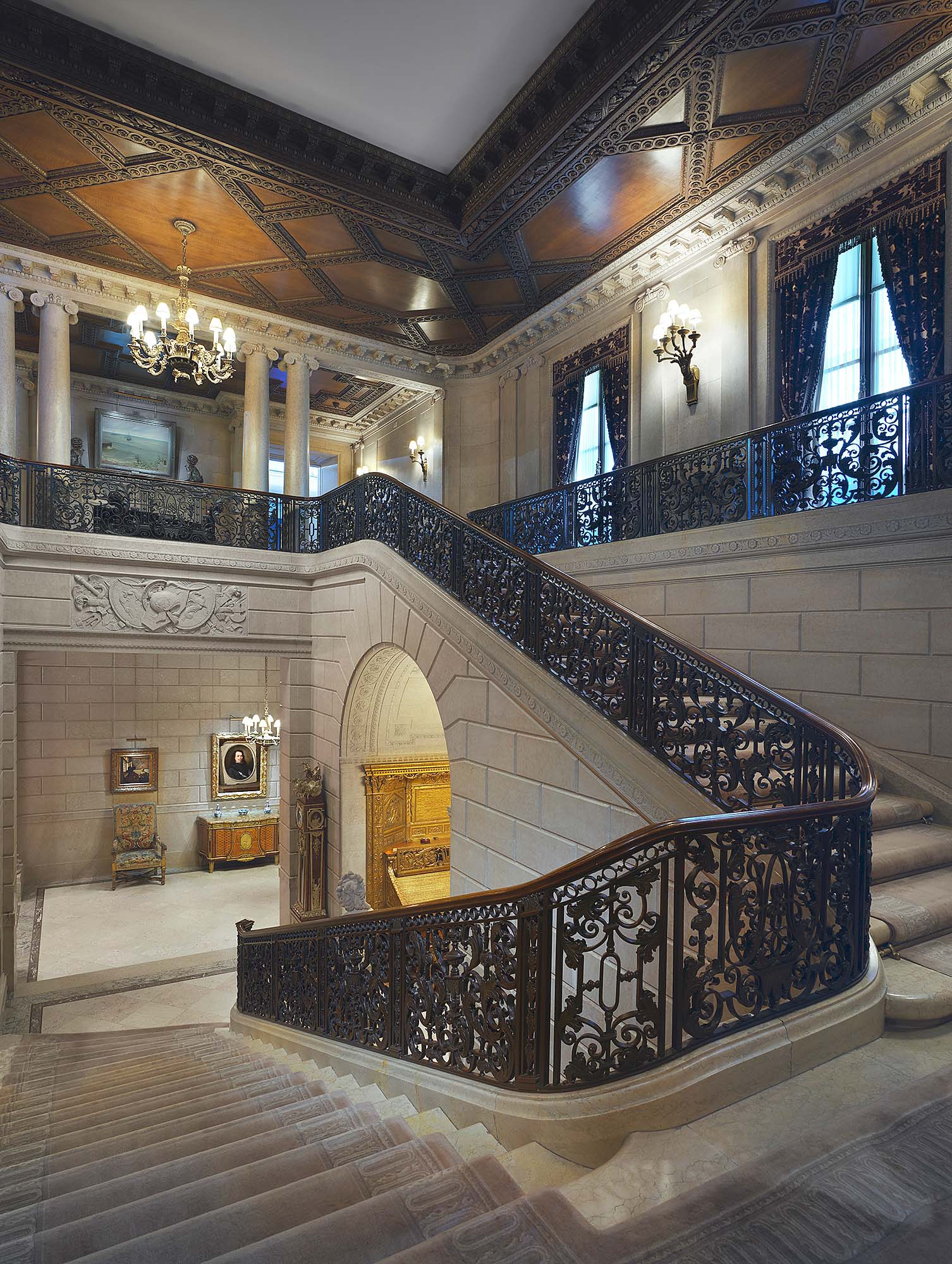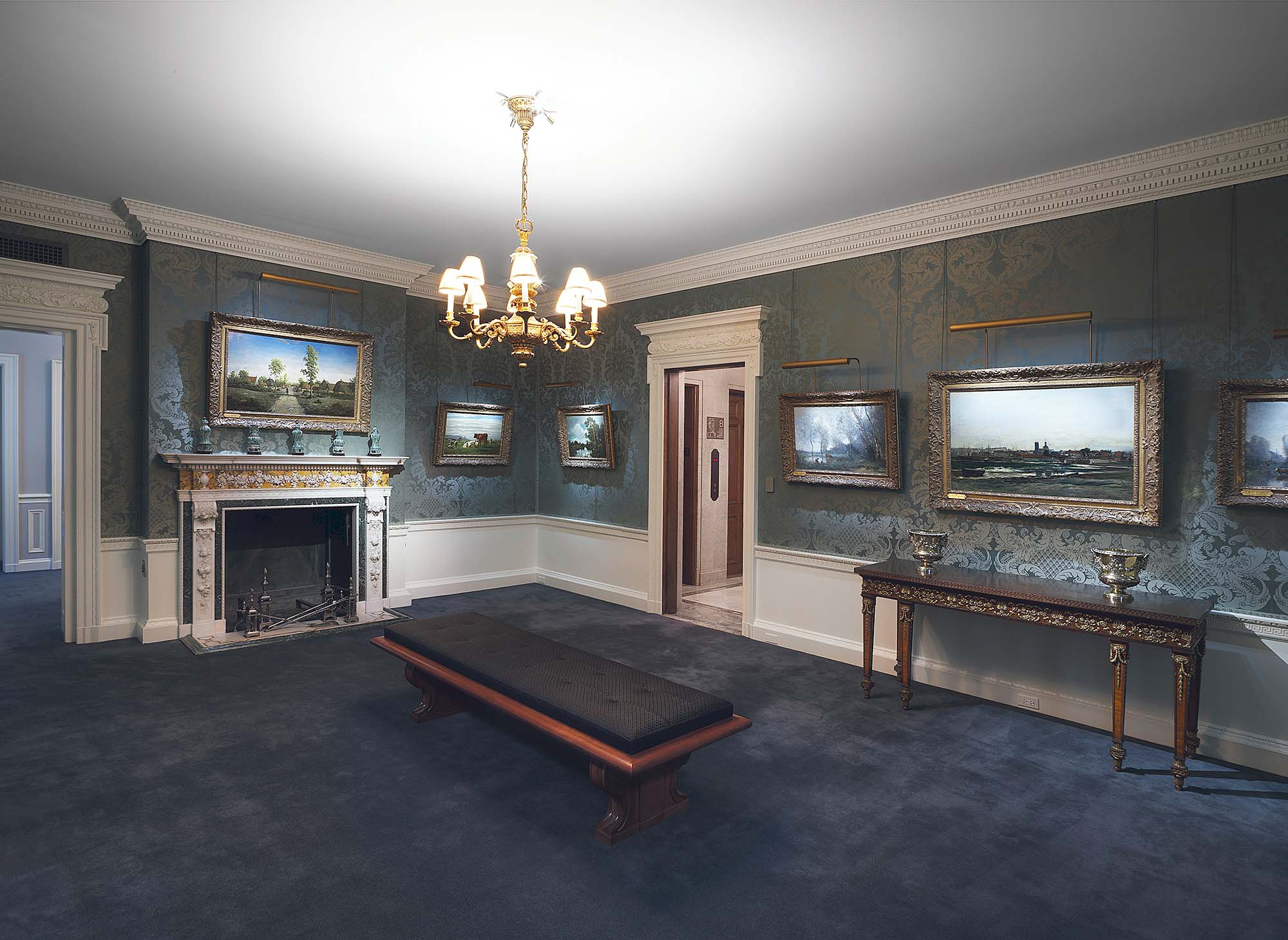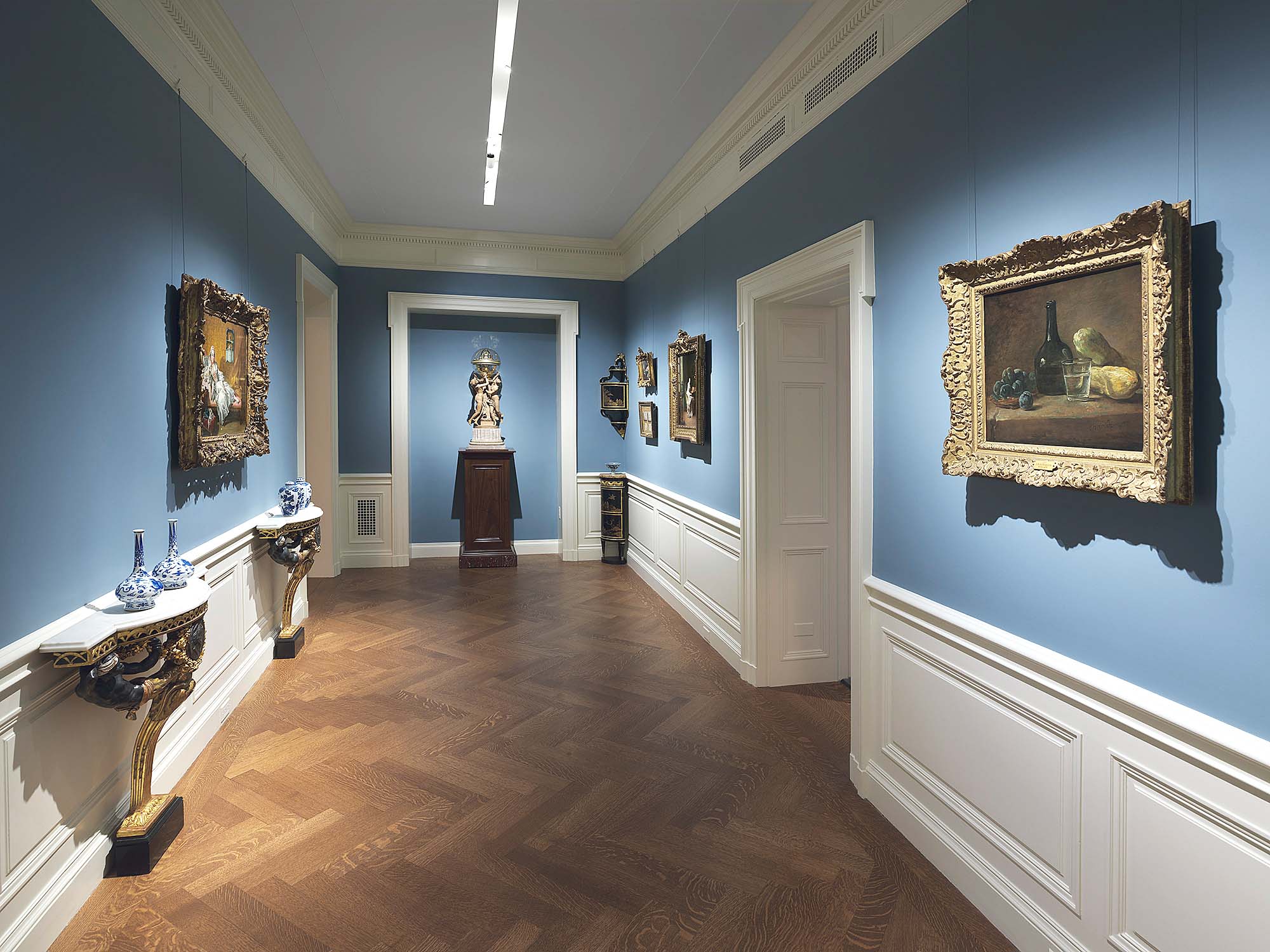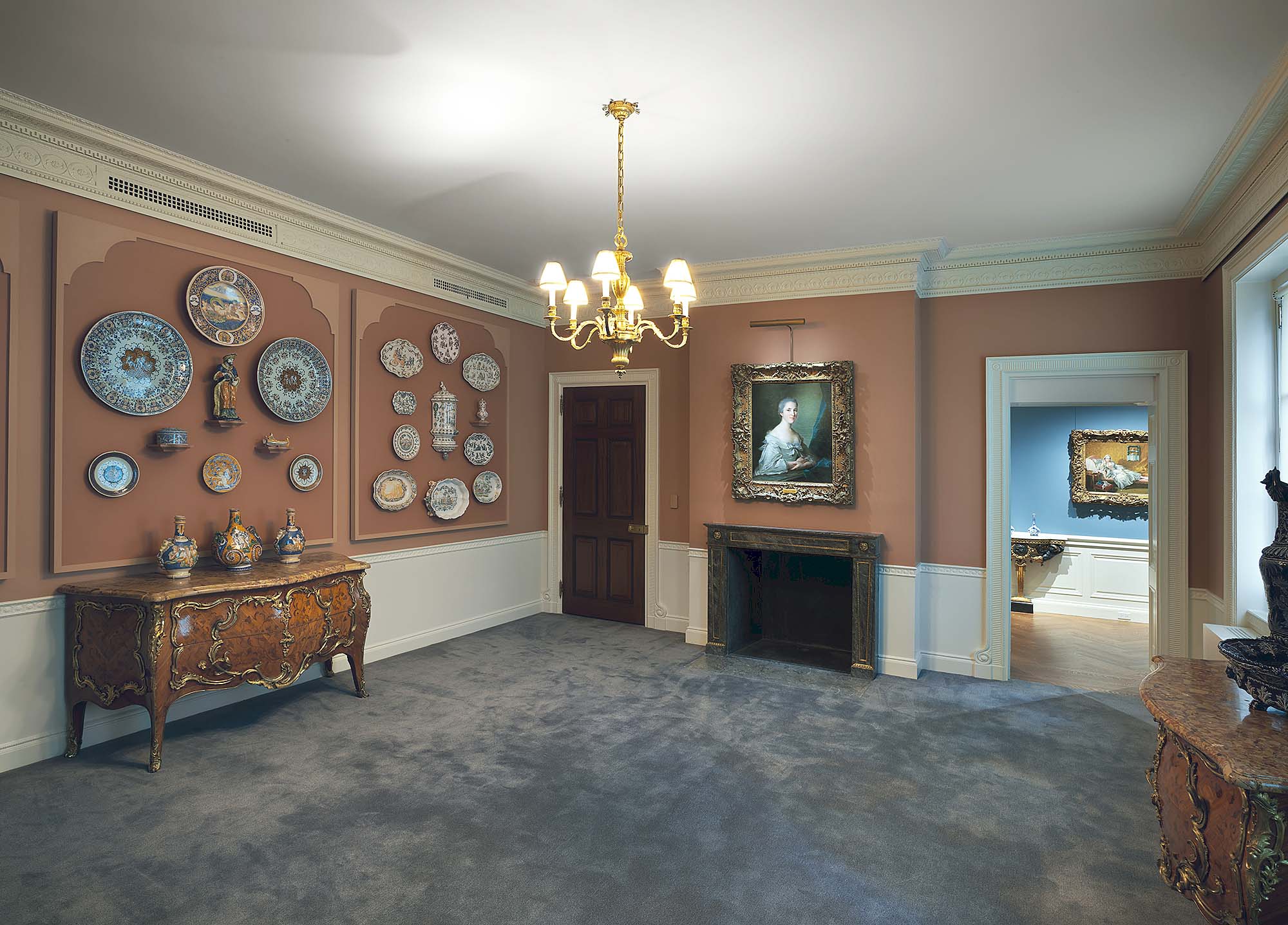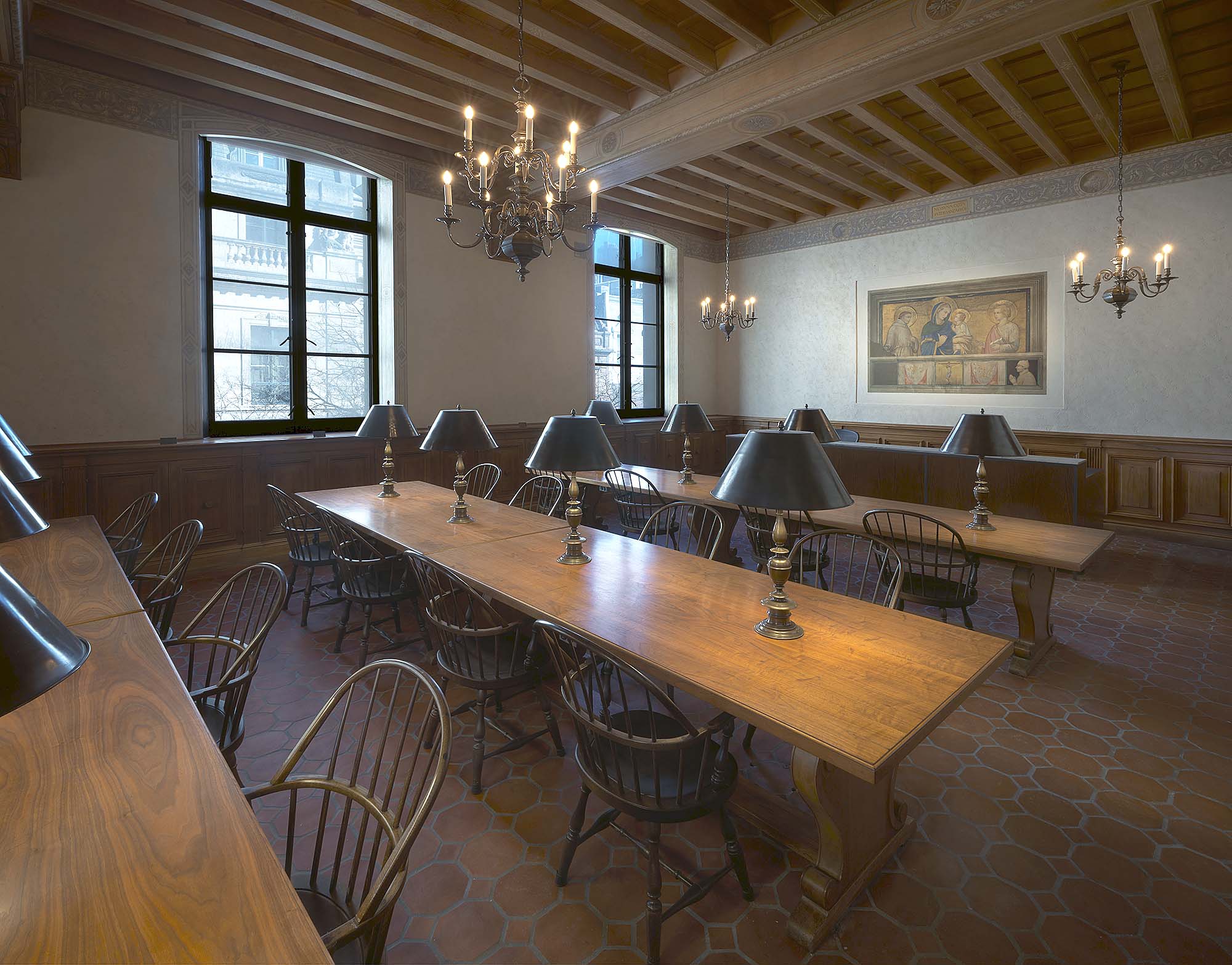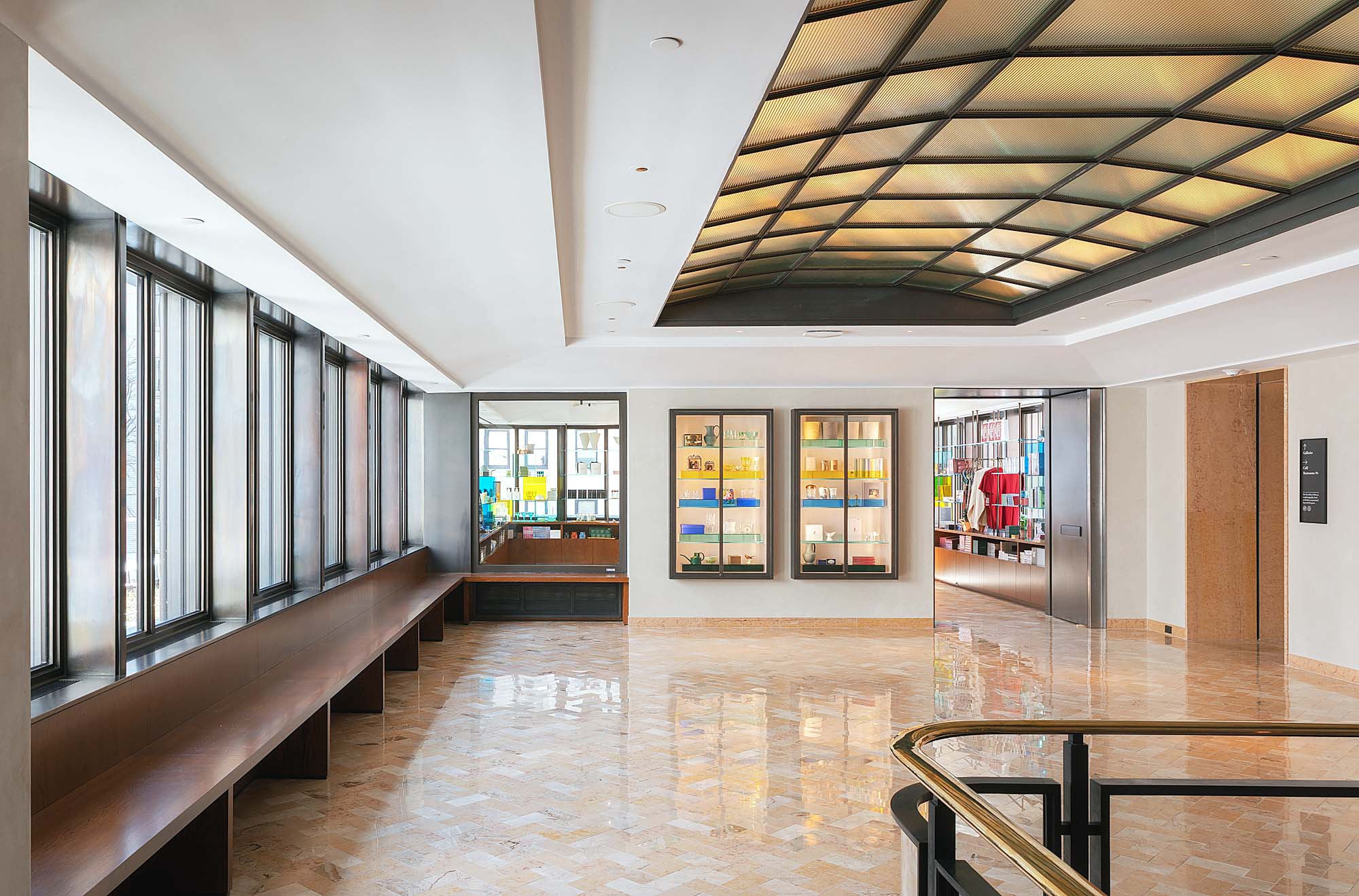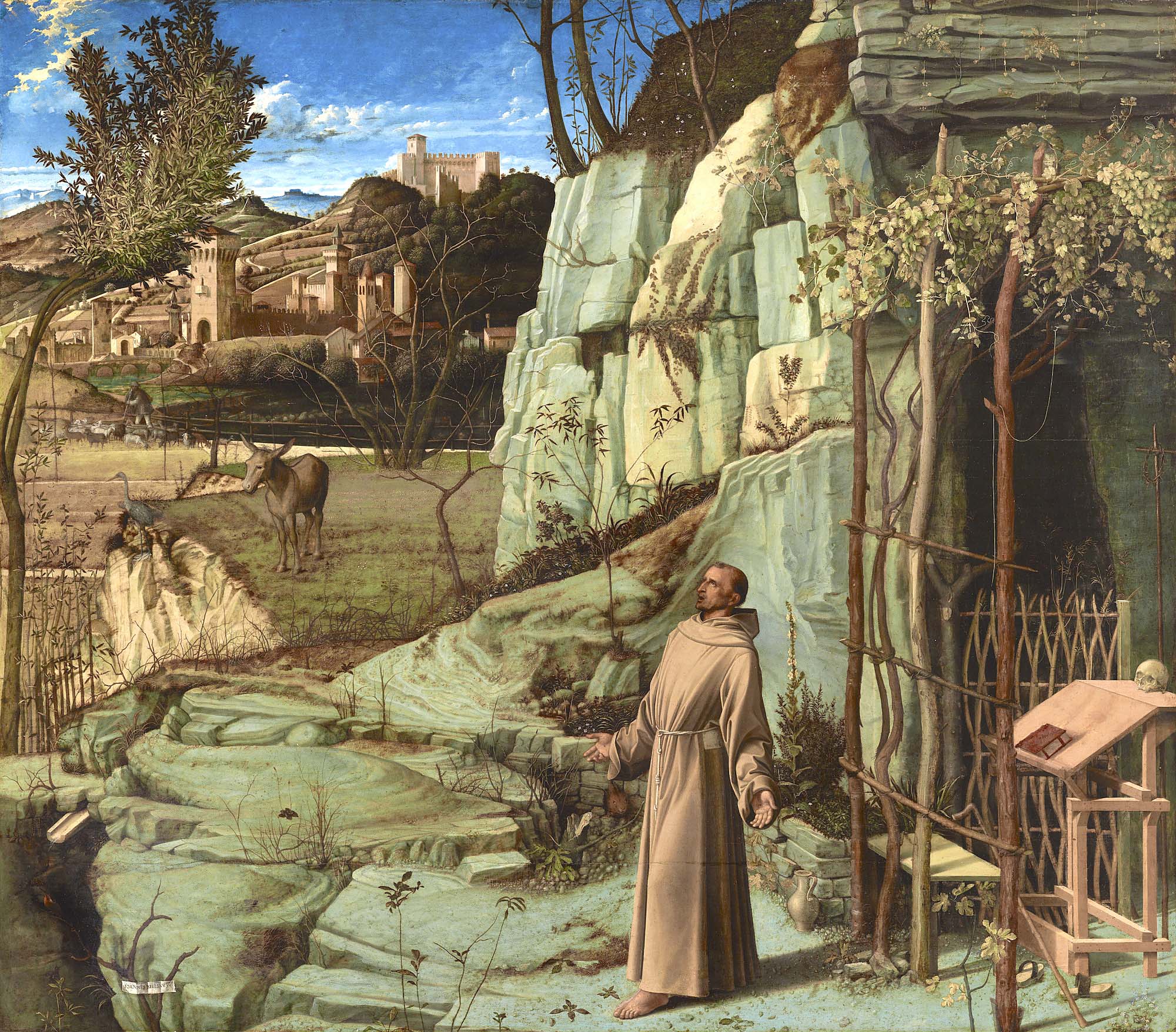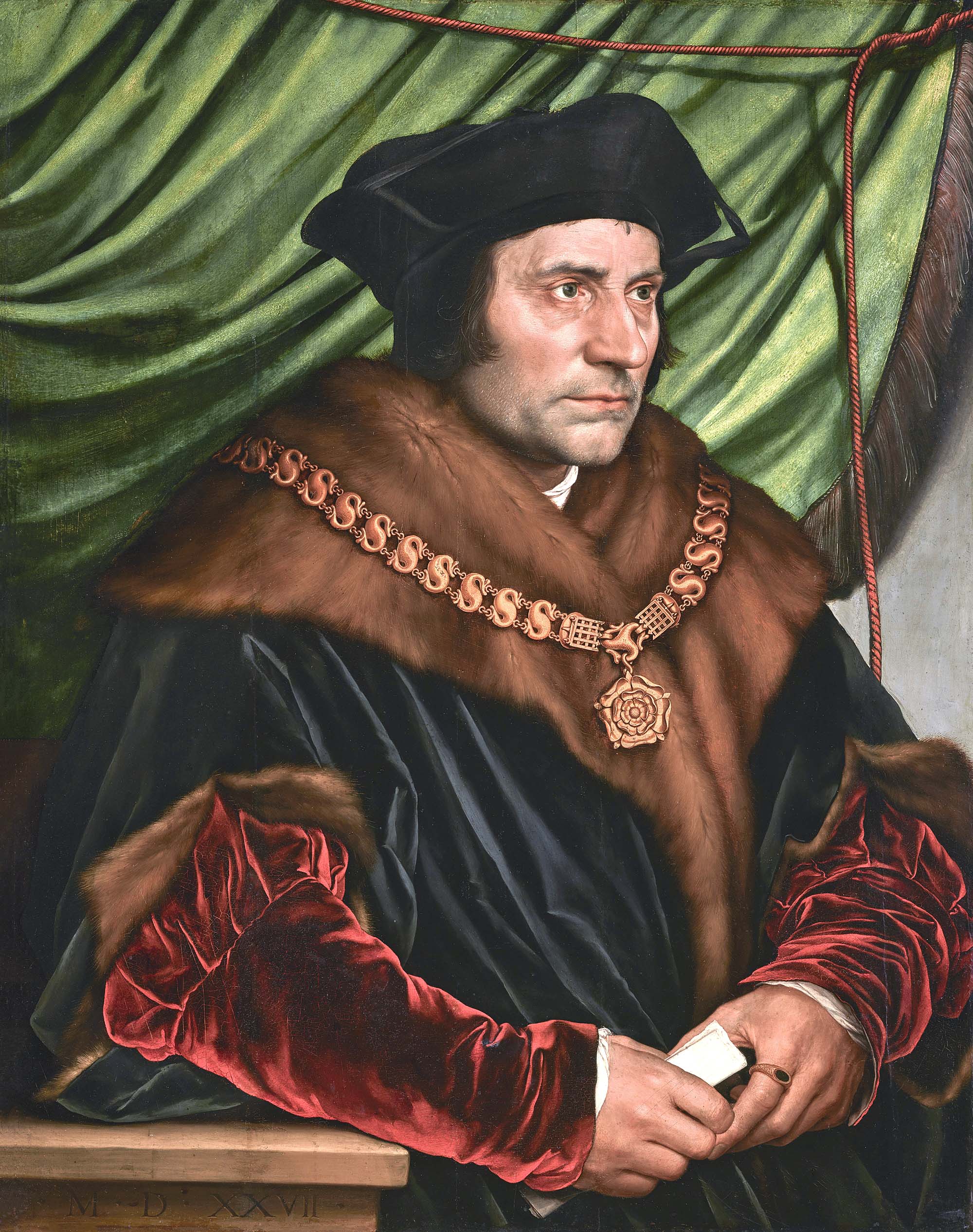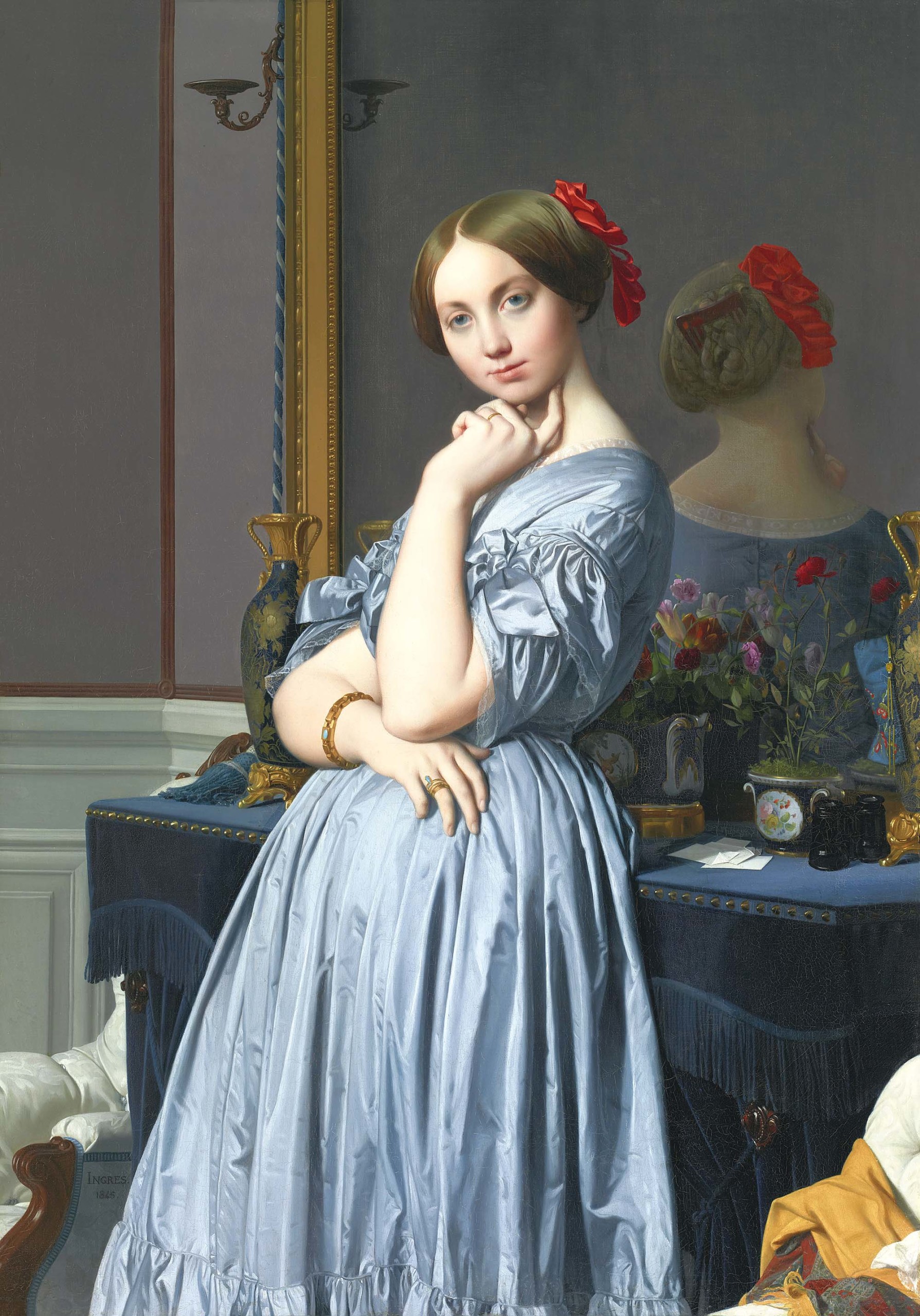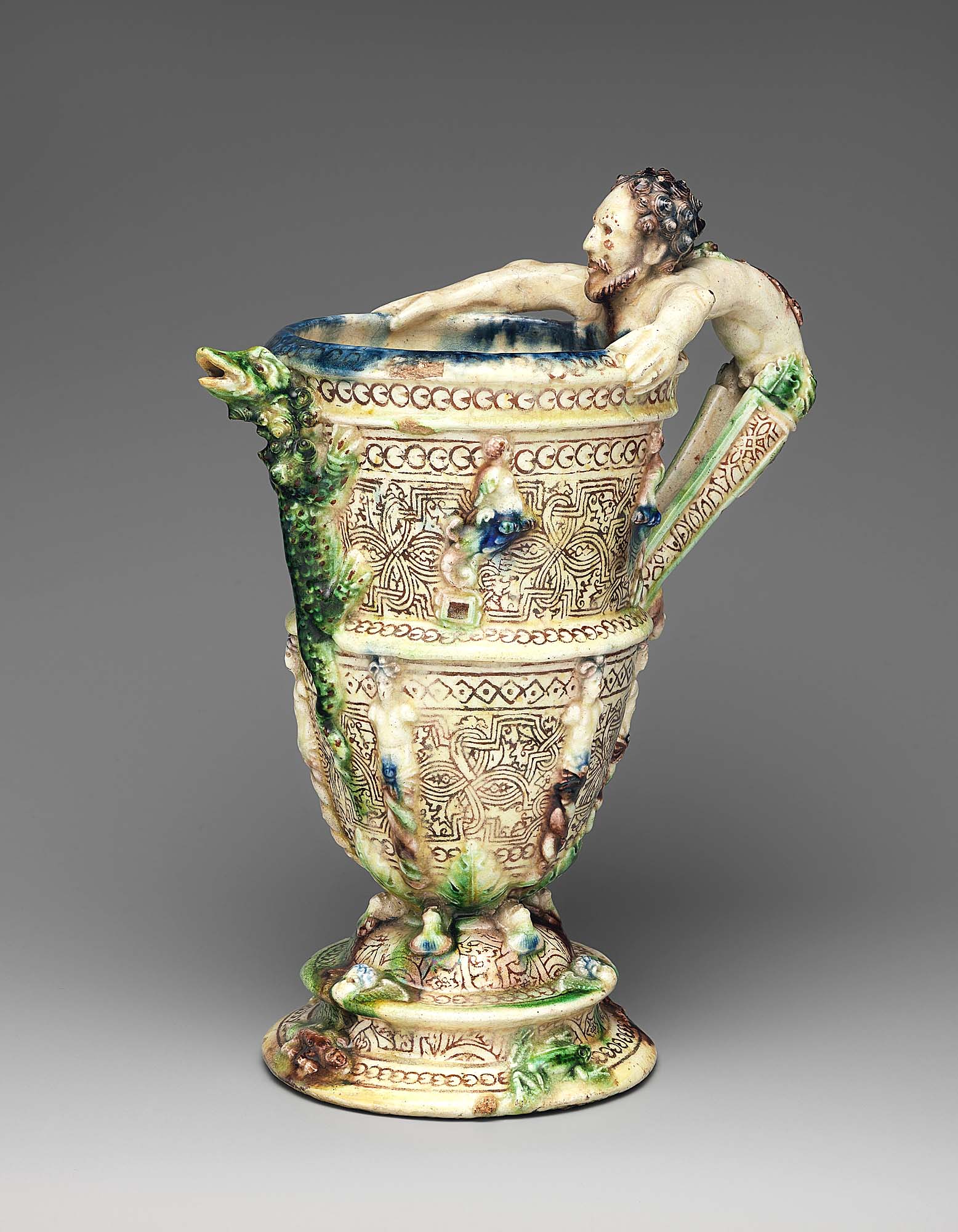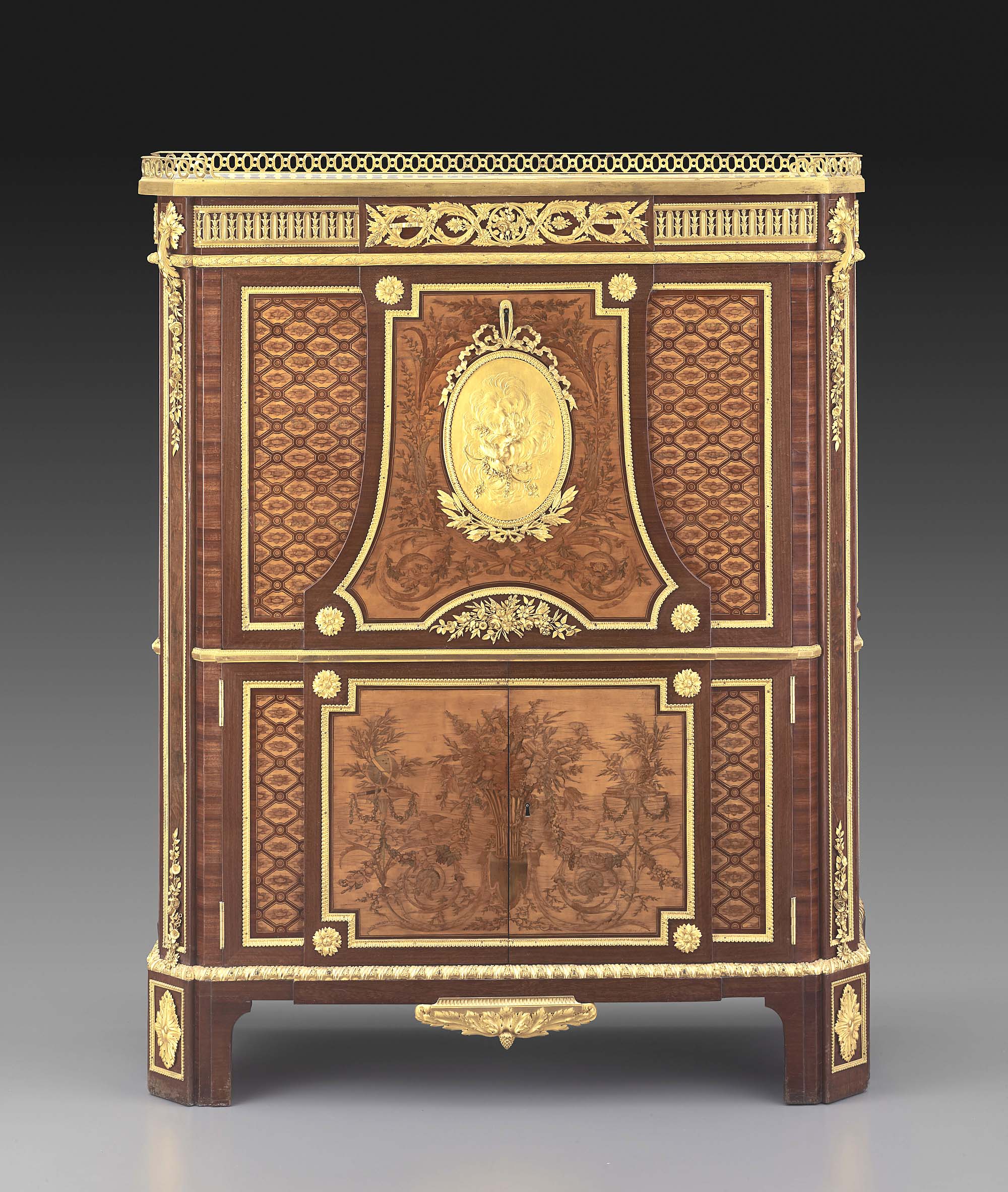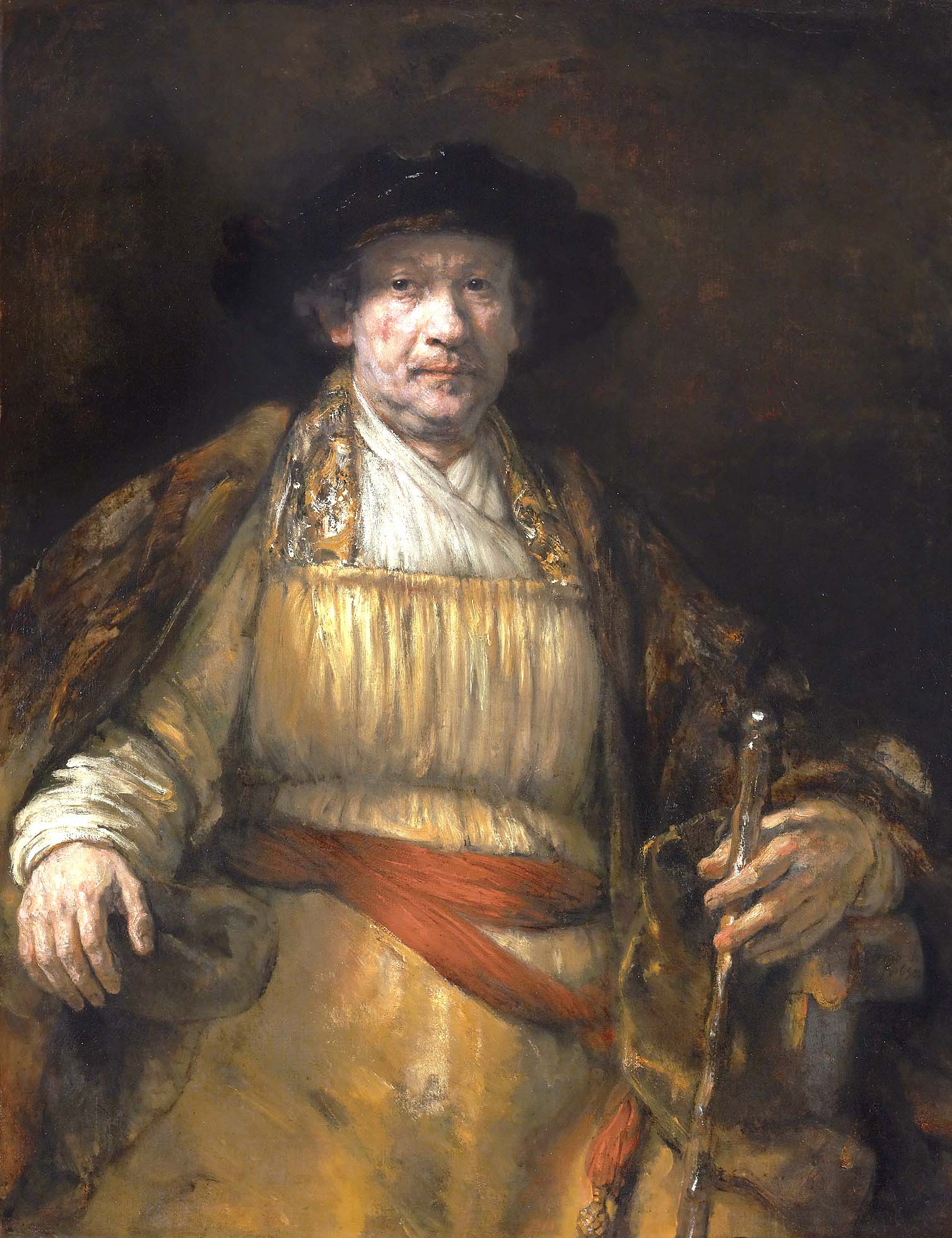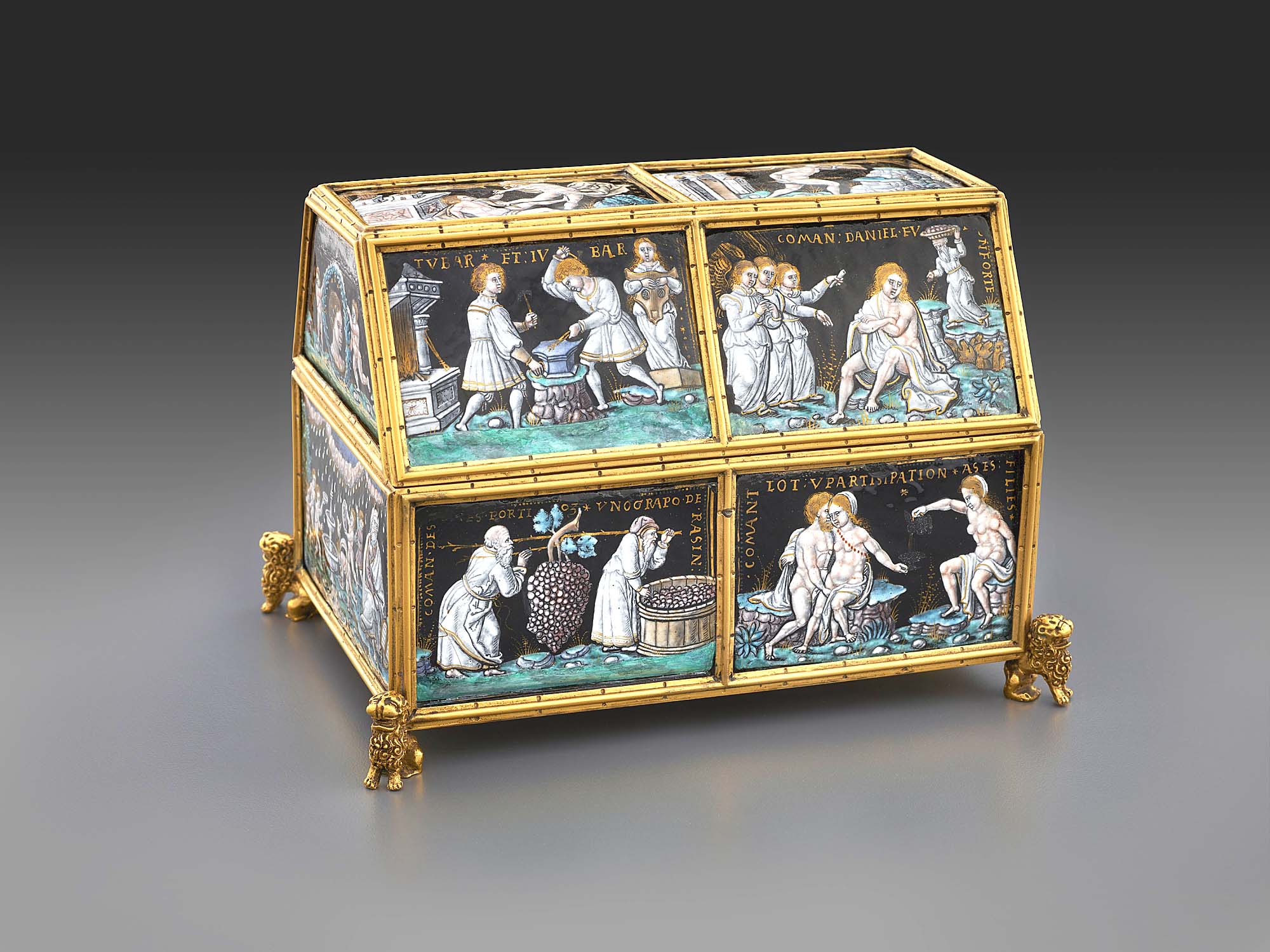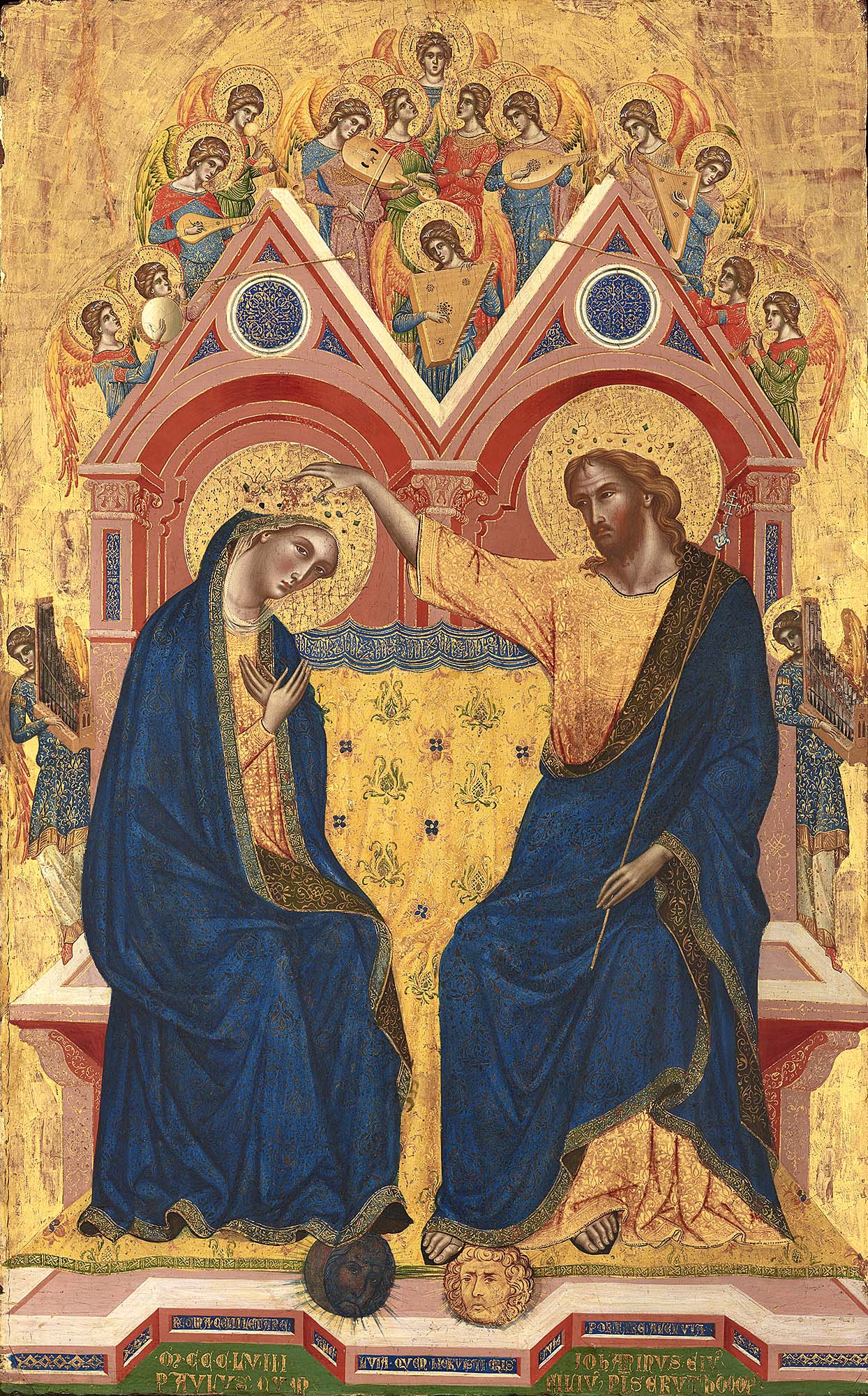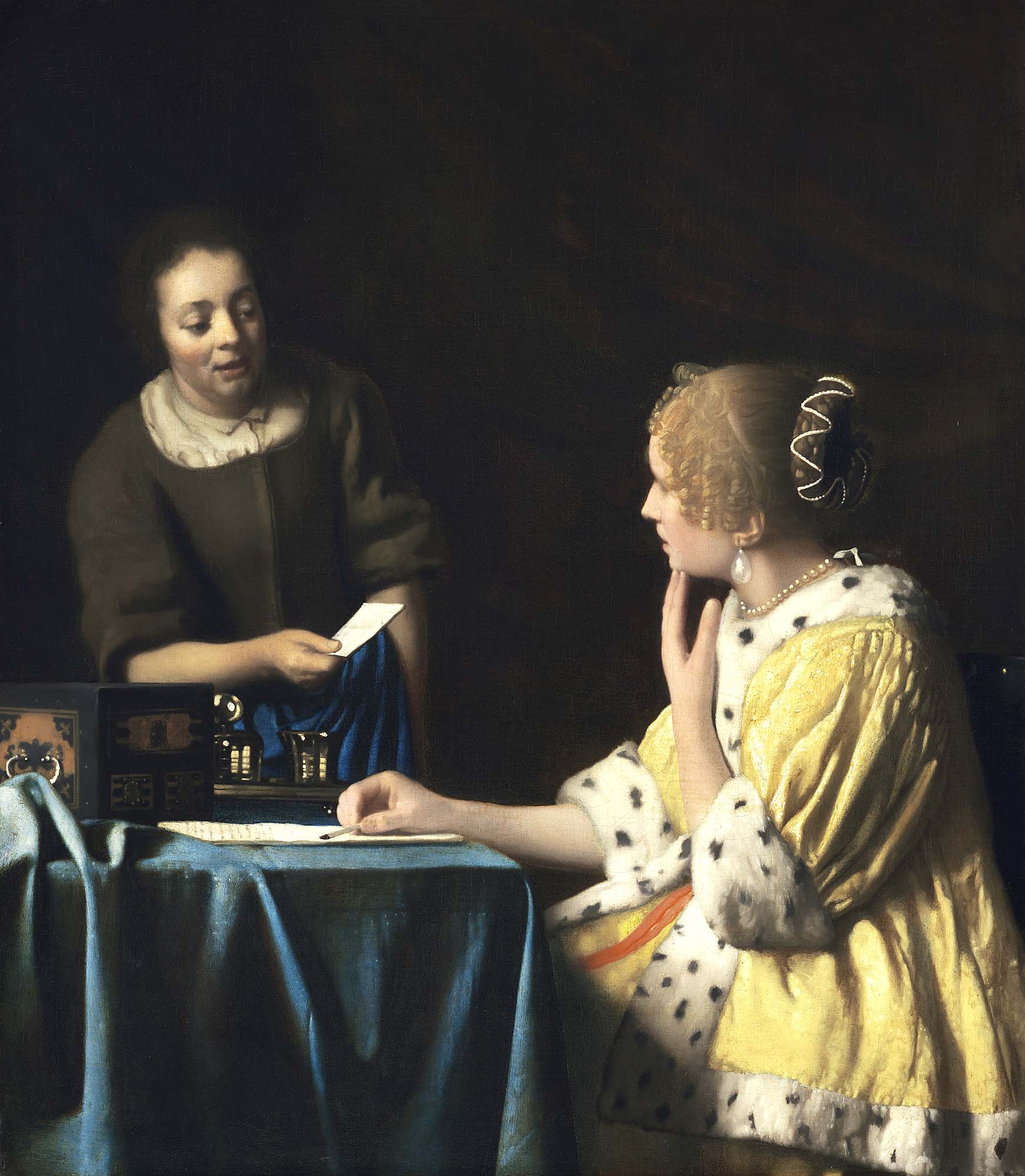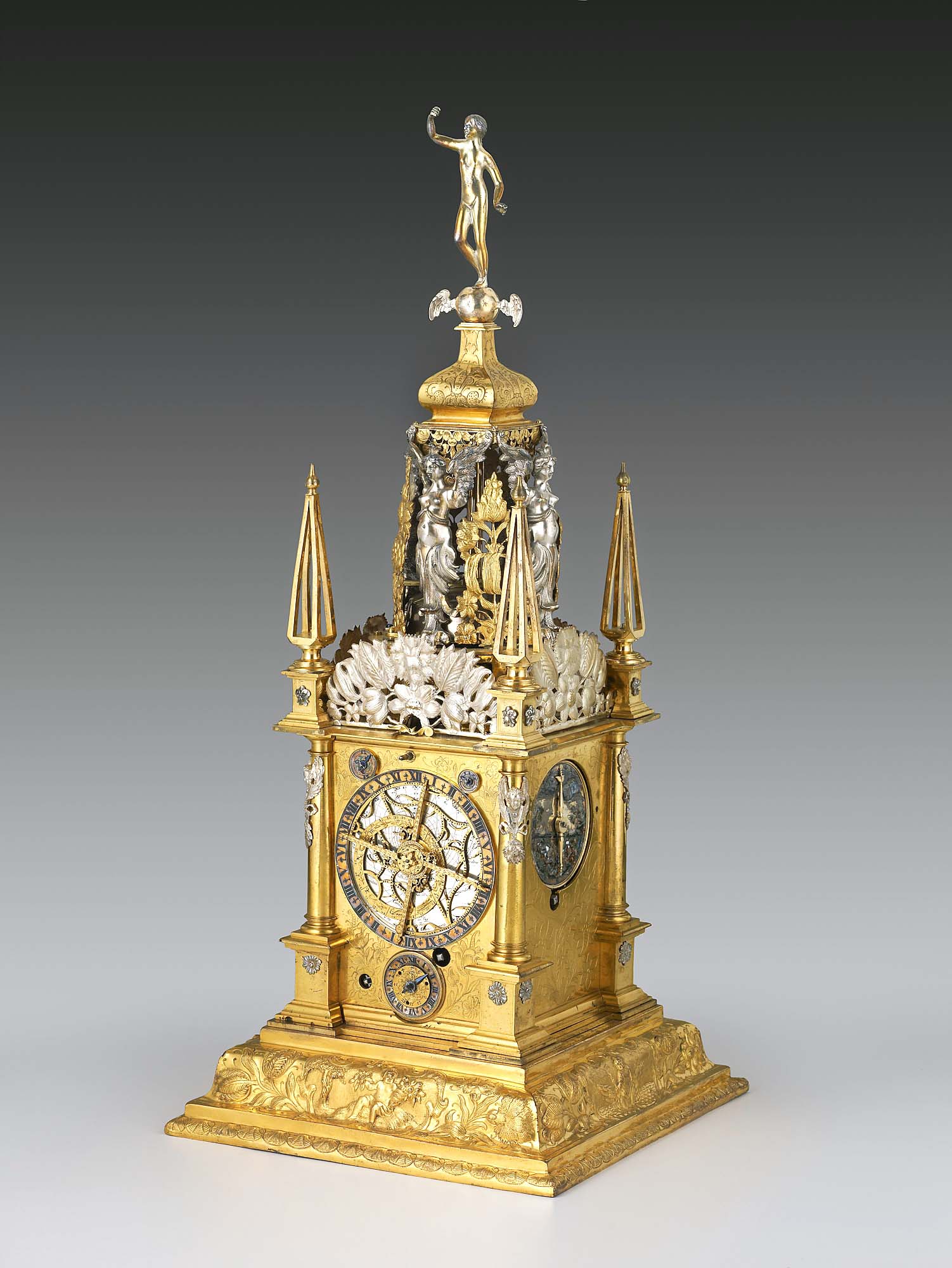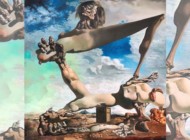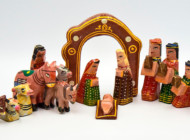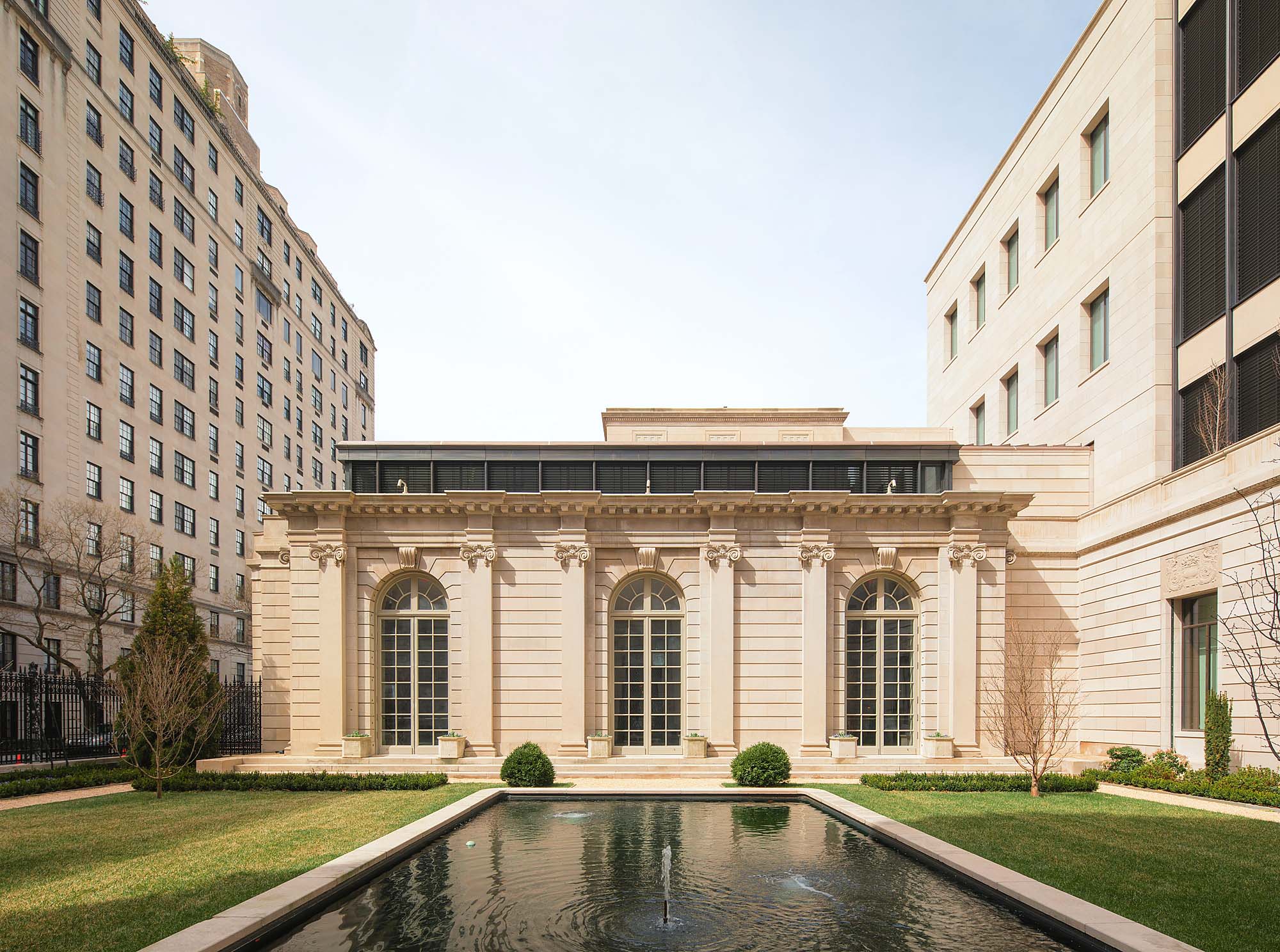
View from 70th Street Garden looking west to the Reception Hall, The Frick Collection, New York City, Nicholas Venezia photo.
By James D. Balestrieri
NEW YORK CITY — I never thought of amnesia as an essential component of architecture, but it actually makes sense, especially in those instances where beloved structures are being replaced or, as in the case of The Frick Museum, undergoing a significant expansion and upgrade. What you want, as architects and designers, is for visitors to forget the stately pile they loved and to come away with the feeling that the new building — not that it’s the same in any way — has been there all along. What helps this in the case of the new and improved Frick Fifth Avenue are the intervening years that the collections spent in the Breuer building on Madison Avenue. Frick Madison inhabited the Breuer for just long enough that I came to think of that modernist, brutalist citadel as “The Frick.” Sure, there’s serendipity involved, not to mention the (not so) little matter of the pandemic, but the heroic move to the Breuer: the challenges of installation and the way the more contemporary exhibitions — “Barkley L. Hendricks — Portraits at the Frick” and “Propagazioni (Propagations),” the porcelains of Giuseppe Penone, for example — looked, utterly appropriate in the spartan surroundings while, building bridges to the historic works, made the marketing seem like genius. Maybe that’s what genius really is: seeing and leaning in to serendipity.
There were things to like about Frick Madison, moments in the space that kept me coming back. I admit that I may be alone in this. I’m probably alone in this. But I dipped into the Breuer on numerous occasions simply to spend time with Giovanni Bellini’s “St Francis in the Desert” in the anchoritic chamber where it hung on its own opposite a strange trapezoidal window that cast bright, otherworldly, not-quite-Euclidean shapes onto the concrete that sang hushed antiphons with and against the great painting. Similarly, Van Eyck’s “The Virgin and Child with St Barbara, St Elizabeth and Jan Vos,” and the Frick’s trio of El Greco paintings seemed to thrive on the Breuer’s stronghold walls.
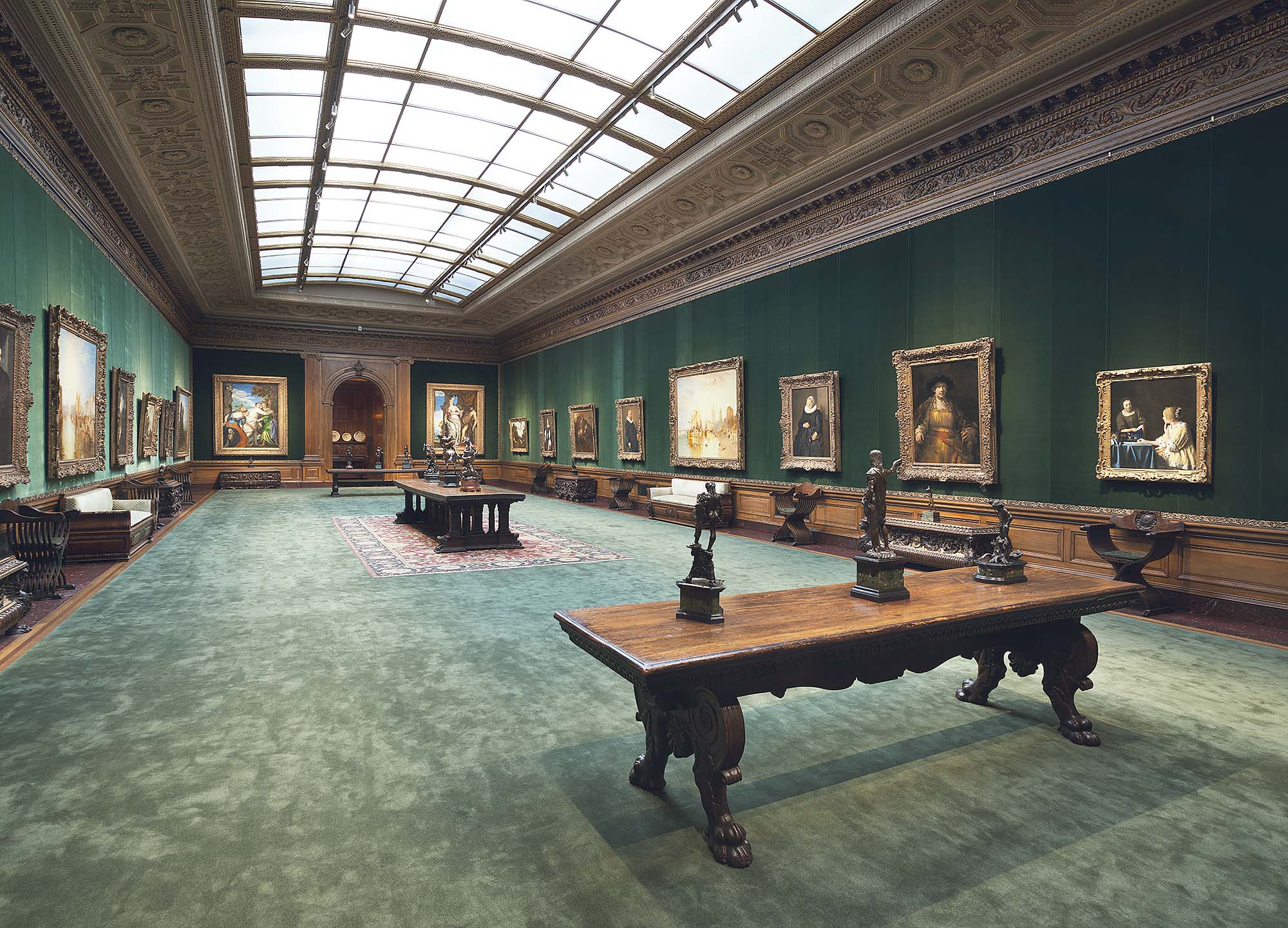
West Gallery. The Frick Collection, New York City. Joseph Coscia, Jr, photo.
Other works, the Turner and Rembrandt pictures, Constable’s “White Horse” and the late Nineteenth Century works seemed just a bit shivery in the chilly Breuer, wanting the atmospheric thermostat jacked up a few degrees. Holbein’s “Sir Thomas More” looked grateful for the little Ice Age he lived in that caused people to dress in furs and thick velvet.
It’s a set of nesting balancing acts, creating a mise-en-scène for a collection, for collections within a collection, for individual works in a collection, for the special exhibitions that move in and out every few months and for the visitors, new crowds that move in and through and out every day. Remodeling an institution like the Frick isn’t just a matter of upgrading the climate controls and carving out better spaces for lectures, events, conservation, research and so on, it’s also party planning on an epic scale, an orchestration of a double dance. Imagine the first dance as the artworks milling around, mulling, murmuring, chatting, arguing, and then imagine the second dance, the visitors, milling and mulling around the artworks.
Even as the artworks remember their old home and look happy to see old friends on the walls adjacent and opposite, and in the galleries down the halls, the grand reopening of The Frick Collection itself on April 17, should have, if I am right, made visitors feel at home in a space that will seem ever to have been thus. And yet, considerable upgrades and additions have been made, as the Selldorf Architects Design statement states, “The newly constructed architectural interventions are dispersed among four major areas. First, the rear façade of the Frick Art Research Library is rebuilt and extended 22 feet south in the former rear yard, for the full height of the building. Second, a two-story overbuild creates an addition in the center of the building adjacent to the Garden Court that houses the new special exhibition galleries, with offices and a conservation studio above. Third, the Reception Hall’s roof is raised by seven feet, and its new second story is aligned to enable direct access to the collection galleries on that floor within the historic house. Finally, a repurposed and excavated space below the 70th Street Garden creates room for a new 218-seat auditorium.”
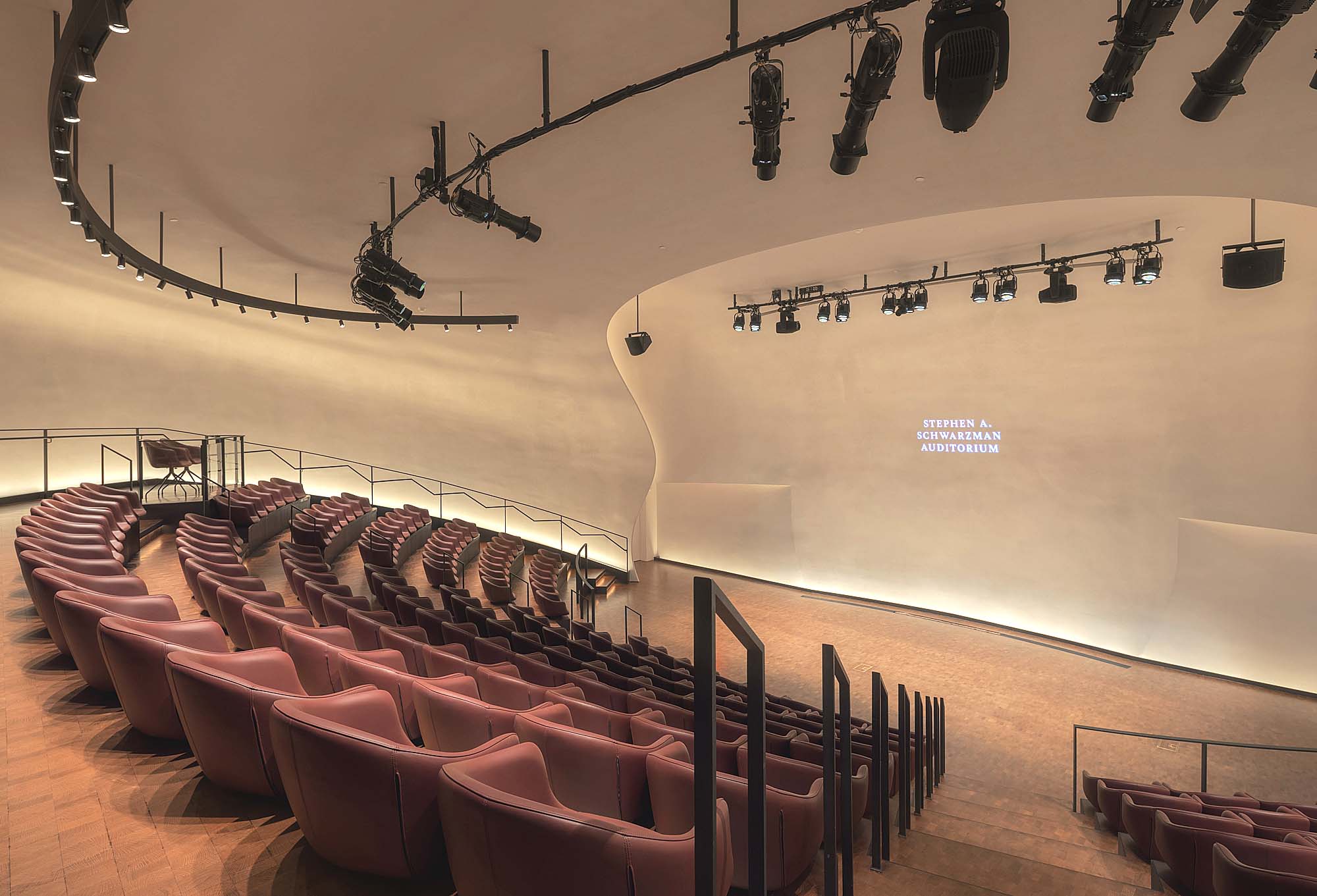
Stephen A. Schwarzman Auditorium. The Frick Collection, New York City. Nicholas Venezia photo.
The ribs and spars on the ceiling of the Reading Room are like the upturned hull of a sailing ship and the captain’s chairs, refectory tables, chandeliers and small lamps seem just right for browsing through catalogs and mezzotints and thinking about new connections between artists and artworks, then and now, and formulating big ideas to add to the long history of art and its intertwining with histories of every kind. Once you’ve published your findings, you will find yourself looking up at small amphitheater of eager listeners as you deliver a lecture on your theme in the brand-new, state of the art Steven A. Schwarzman Auditorium.
On the other hand, the truly new spaces, the Conservation Studios, Eveillard Hall, the Ian Wardropper Education Room, even the Gift Shop, throw the mind back, not as far, perhaps, as Daniel Hastings’s pre-World War I Beaux-Arts mansion, but to an American architect who was on the rise at the time: Frank Lloyd Wright. Let me be clear, the Selldorf Design doesn’t copy Wright, it isn’t even really Wright-esque; it evokes Wright in subtle hints — wood and window shape, for example — that form a fine mortise and tenon joint with the original building.
Walk up the Grand Stair, to the Second Floor Landing, though “walk” seems too simple a word for what you’ll do. Whatever you do and however you do it, you’ll probably feel underdressed. The second floor, long closed to the public, has to be near the top of the list in terms of sheer viewer pleasure. One of the things I enjoyed about Frick Madison was the organization of the porcelains by color. Learning that color schemes were popular among European and American collectors of fine pottery opened that world up for me in a whole new way. The galleries on the second floor of the Frick, including the Boucher Room, the Gold-Grounds Room, the Walnut Room, the Impressionist Room and the Breakfast Room all take their cues from color.
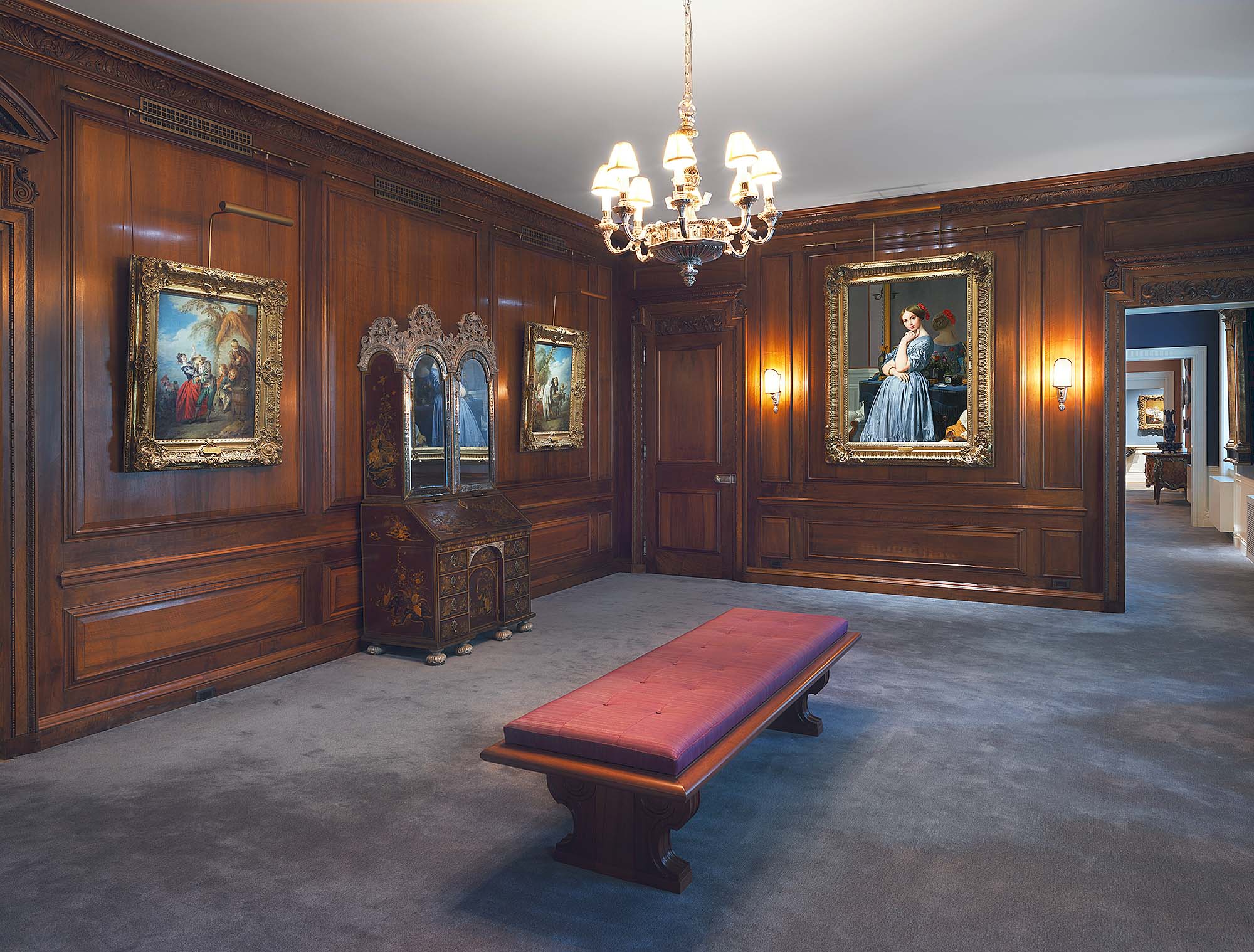
Walnut Room, new second-floor gallery. The Frick Collection, New York City. Joseph Coscia, Jr, photo.
The Boucher Anteroom and the Boucher Room itself, for example, pick up what I have always thought of as Tiepolo blue — or should it be Boucher Blue? Wedgwood Blue? — in the eight sumptuous Arts and Sciences panels that line the room. The energetic children in the panels, playing at everything from “Singing and Dancing” to “Astronomy and Hydraulics,” look on to a bright Eighteenth Century room of blue and gold brocade and a polished parquet floor. The effect is bright and breezy, presenting the French aesthetic of the period with great delicacy.
Dark blue walls provide the background to the medieval paintings in the Gold-Grounds Room. This blue, called ultramarine, matches the blue pigment in masterworks like Paolo Veneziano’s “The Coronation of the Virgin.” Once made from powdered lapis lazuli, which was mined in Afghanistan and traded throughout Europe and Asia, ultramarine was at least as expensive as the gold that forms the ground of the paintings. Because the blue of the walls brings out the ultramarine in the artworks, we see these, literally, in a different light, as the gold — that glitters — recedes. This is one of the ways in which visiting the Frick now, even and especially for frequent flyers, will be a new experience. Looking at the Veneziano now, for example, the blue of the robes pops, as you might expect, but then the eye begins to dart from angel to angel and from detail to detail in the architecture because of the blue color. Gold filigree scrollwork, Asian in form, makes the robes and geometric devices dance. At last, because of the splendor that surrounds them, the eye rests last on the faces of the Virgin Mary and Christ as he crowns her. They almost seem disembodied, incorporeal, pure souls, as of course, they were in scripture. All because the walls are blue — the right blue.
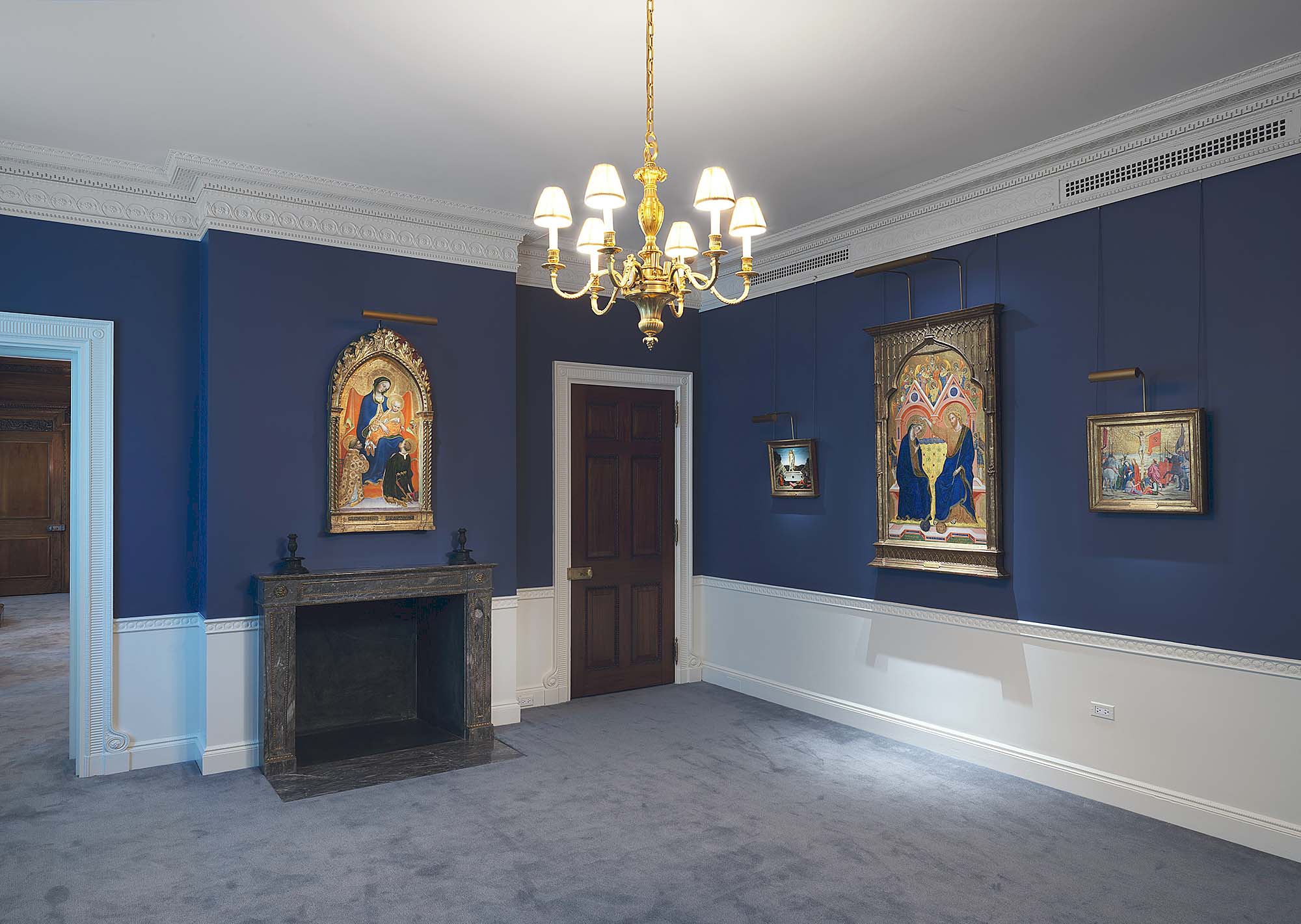
Gold-Grounds Room, new second-floor gallery. The Frick Collection, New York City. Joseph Coscia, Jr, photo.
Standing in the Walnut Room, you look through to the Gold-Grounds Room and beyond to the Boucher Anteroom. The carpet in the Walnut and Gold-Grounds Room is the same periwinkle and that color harmonizes with the Wedgwood blue walls in the Boucher Anteroom. And that all seems to spring from one of the Frick Collection’s greatest works, Jean-Auguste Dominique Ingres’s 1845 portrait, “Louise, Princesse de Broglie, Later the Comtesse d’Haussonville.” Or, rather, it all seems to spring from the color of her gown. I could go on and show how the ultramarine of the Gold-Grounds Room and the carpet in the Impressionist Room and the Breakfast Room move through shades of blue, but the point is that the rooms on the second floor of the Frick flow. The artworks bob on the colors, reflecting and picking them up, letting the eyes of visitors skim their surfaces.
In the end, which is really the beginning, the new Frick, taken as a whole, is a metaphor for the arts as they flow through history, with individual works reflecting and shaping their times.
The spaces are meticulously planned and yet, in many ways, are designed so visitors aren’t aware of the planning. There’s even, at least in my mind, a small homage to Met Madison. I noticed the stone walls in the Small Hallway, where the Vermeer works hang, and for a moment I thought I was back in the Breuer, feeling it flicker between castle and bunker. And then I forgot all that and went to eavesdrop on the conversations between the artworks.
The Frick Collection is at 1 East 70th Street. For information, 212-288-0700 or www.frick.org.


